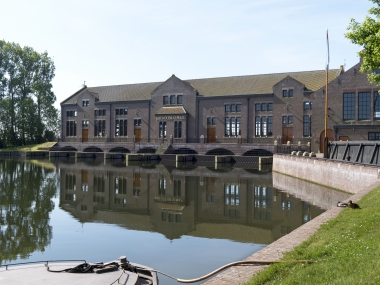An innovative approach to cultural heritage management
Edited on
09 March 2017When thinking of economic development in small-medium size cities, cultural heritage always plays an important role in any city strategy, particularly in the historical towns where the valorisation of cultural heritage remains one of the best tools to promote social and economic development. However several factors such as lack of funding, lack of management expertise, are preventing these cities to fully exploit its potential, limiting the capacity to valorise these important assets.

The INT-HERIT implementation network will build a framework for innovative heritage management where partner cities will exchange knowledge and build a participatory process around their strategies/plans. They will also monitor and benchmark their implementation through the creation of adequate monitoring metrics. The network will provide advances in the promotion of a more sustainable policy regarding cultural heritage, amplifying its social and economic impacts in the city and their region. The main goal is to improve implementation of these strategies/plans by taking cultural heritage projects out of a closed box. From connections with the outside world that are foreseen but not fully exploited to a new approach where projects are built using a multi-connected box. In this case several relations with the outside world are analysed, fully exploited and measured, namely on such factors as social transformation, tourism, entrepreneurship, creative industries, etc.
An integrated approach is mandatory
The INT-HERIT network is composed by 7 small to medium-size cities - Baena as leader (ES), Alba Julia (RO), Sigulda (LE), Mantova (IT), Espinho (PT), Intercommunale Leiedal (BE) and Dodoni (GR) – all wanting to improve their strategies towards cultural heritage management. Cultural heritage processes involve so many stakeholders that many times it becomes impossible to address all of them. Several governmental agencies and other related organizations play crucial roles in these processes, turning horizontal and vertical integration a key challenge of the network. Cultural heritage management is often under a very strict legal framework requiring a strong interaction between local authorities and regional/national authorities to move projects forward. Finally, territorial integration is also mandatory, particularly when addressing tourism development as it usually falls under a regional or trans-regional strategy.
The important role of Public Private Partnerships (PPP)
Financial Innovation is a crucial tool in the scope of cultural heritage management. It is widely used today in all EU countries, however new and innovative ways of making PPP arrangements namely through active participation of citizens, will provide new solutions for the sustainability of cultural heritage. PPP will play a key role in our strategy for cultural heritage management. They impact greatly on the capacity of raising financial support and to maximize the social economic impact in the city, namely in the promotion of new business around the sector and ultimately in job creation. INT-HERIT cities will promote the adoption of this type of financial innovation on their territories, learning from others’ experiences to support new long-term agreements.
The Participatory Process and Monitoring
Another key element of the project is raising the awareness among actors to new strategies for cultural heritage management. More specifically, how an integrated approach can maximize their results in two ways. The first regards the rehabilitation and maintenance of cultural assets. The second concerns the involvement of relevant stakeholders, from business to citizens, in order to produce an enduring impact in the social and economic landscape of the city. This is particularly important in small and medium- sized European cities like those forming the INT-HERIT network, in which cultural heritage projects usually have a greater impact as opposed to big cities. This will also favour monitoring metrics since it will make it easier to measure impact of the operational action-plans. Each city has its own different actions but all partners want to take advantage of the INT-HERIT Implementation Network to “inject” a participative and integrative approach to their local actions. Their final aim is to provide a clear path from strategy to the operational action-plan in cultural heritage management.
The management of heritage as a challenge
Jesús Rojano, is the Mayor of Baena, the city that leads INT-HERITcities network. He emphasizes the specificity of small and medium-sized cities in the European context. He also highlights the potential of cultural heritage as a lever for the promotion of sustainable and integrated development. The creation of the network of cities has taken into account the historical and thematic diversity of the cultural resources of each one of them, the different degrees of experience in conservation policies and the value of heritage, the presence of plans and strategies, and the connection with integrated urban development, among other aspects. Based on this complementarity, the network proposes a common project based on the fact of sharing a challenge. This is achieving a greater professionalization of resourcemanagement, monitoring of the implementation of strategies and the impelemntation of a participatory method
The INT-HERIT team in Baena is composed of Raquel Moreno and Antonio Zafra. They outline the need that the cities of the network show their value as attractive places to capture the attention of investors, entrepreneurs, and stakeholders connected with the territorial and integrated development in their respective areas. It means municipalities work in an efficient and innovative way in the management of cultural local resources. At the same time they are able to convince other local and external actors to participate in the implementation process of their local plans and strategies. A high flexibility must be exhibited, aimed to foster the public, private and social partnership in the management of local cultural resources, as well as attract new funding instruments, including the commitment with innovative alternatives through a clear policy of public procurement.
Elaborated by Pedro Soutinho (LE), Antonio Zafra and Raquel Moreno (LP)
 Submitted by Pedro Soutinho on
Submitted by Pedro Soutinho on
